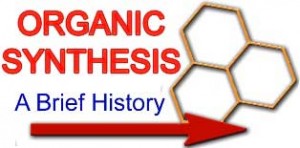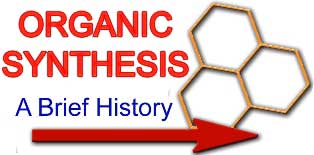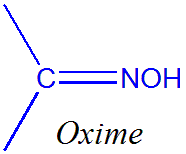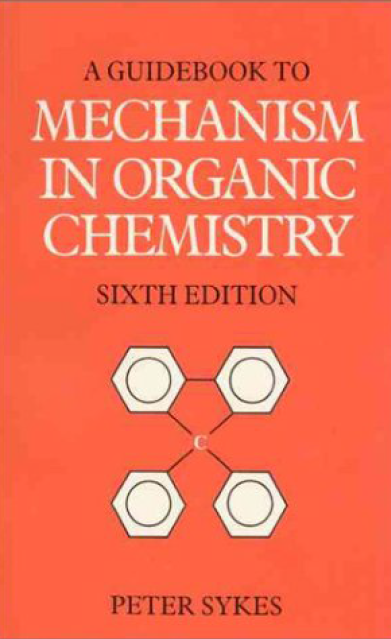Different Aspects of Organic Synthesis
 The drive to improve the efficiency of the drug discovery process has created the need for rapid compound synthesis and efficient methods for screening compounds for biological activity. The fields of combinatorial chemistry and high-throughput screening matured during the early 1990s to meet the challenges of modern pharmaceutical research. Solid-phase synthesis (SPS) and parallel solution-phase synthesis techniques have the potential to deliver hundreds of thousands of compounds in a relatively short period of time. However, the emergence of these combinatorial organic chemistry techniques has created the additional demand for new analytical techniques to follow the course of chemical reactions and characterize final products.
The drive to improve the efficiency of the drug discovery process has created the need for rapid compound synthesis and efficient methods for screening compounds for biological activity. The fields of combinatorial chemistry and high-throughput screening matured during the early 1990s to meet the challenges of modern pharmaceutical research. Solid-phase synthesis (SPS) and parallel solution-phase synthesis techniques have the potential to deliver hundreds of thousands of compounds in a relatively short period of time. However, the emergence of these combinatorial organic chemistry techniques has created the additional demand for new analytical techniques to follow the course of chemical reactions and characterize final products.
Combinatorial Organic Chemistry
The field of combinatorial chemistry originally focused on the automated synthesis of peptides and small molecule libraries for drug discovery. Invariably, these compounds were assembled on chemical scaffolds immobilized on a solid support. However, with the rapid development of new technologies to synthesize compounds en masse, and the application of these techniques to fields outside of pharmaceutical research, the field of combinatorial chemistry has been in need of a more comprehensive definition. While a formal definition has yet to emerge, combinatorial chemistry may be described as a process of synthesizing sets of structurally related compounds by reacting all possible combinations of a limited number of chemical reagents according to a general reaction scheme in a manner compatible with the subsequent screening of the products for specific properties. Following types of synthesis have been of significant importance in organic synthesis:
- Solid Phase Synthesis
- Mixture Synthesis
- Split Synthesis
- Spatially Addressed Synthesis
- Encoding Strategies like molecular tagging.
- Solution Phase Synthesis.
Techniques Applied in Organic Synthesis
There are numerous techniques that are often used and practiced in organic synthesis.
- Spectroscopy
- UV/Vis Spectroscopy → Organic molecules and functional groups are transparent in the portions of electromagnetic spectrum which as UV and visible regions, which lie in the wavelengths from 190 to 800nm. Consequently, absorption spectroscopy is of limited utility in this range of wavelengths. However, in some case we can derive useful information from these regions of the spectrum. That information, when combined with the detail provided by IR and NMR spectra, can lead to valuable structure proposals.
- Infrared (IR) Spectroscopy → Almost any compound having covalent bonds, whether organic or inorganic, absorbs various frequencies of electromagnetic radiation in the infra red region of the electromagnetic spectrum. This region lies at wavelengths longer than those associated with visible light, which range from approximately 400-800 nm, but lies at wavelengths shorter than those associated with microwaves, which are longer than 1mm. For chemical purposes, scientists are interested in the vibrational portion of the infrared region. It includes with wavelengths between 2.5µm and 25µm. IR spectroscopy tells us about the functional groups present in the molecule.
- Nuclear Magnetic Resonance (NMR) Spectroscopy → NMR is a spectroscopic method that is even more important to the organic chemist than IR spectroscopy. Many nuclei may be studied by NMR techniques, but hydrogen and carbon are most commonly available. Whereas IR spectroscopy reveals the types of functional groups present in a molecule, NMR gives information about the number of magnetically distinct atoms of the type being studied. When hydrogen nuclei are studied, for instance, one can determine the number of each of the distinct types of hydrogen nuclei as well as obtain information regarding the nature of the immediate environment of each type. Similar informations can be determined for the carbon nuclei. The combination of IR and NMR data is often sufficient to determine completely the structure of an unknown molecule.
- Mass Spectrometry → Mass Spectrometry originated from late 1890s when J.J.Thomson determined the mass-to-charge ratio of the electron, and Wien studied magnetic deflection of anode rays and determined the rays were positively charged. Each man was honored with the Nobel Prize later on. In 1912, the former scientist studied mass spectra of atmospheric gases and used a mass spectrum to demonstrate the existence of neon-22 in a sample of neon-20, thereby establishing that elements could have isotopes. The earliest mass spectrometer was built by A.J.Dempster in 1918. Today, mass spectrometry is used in various fields of life sciences. To date 5 noble prizes have been awarded only in such a technique [12].
- Chromatography → Discovered in 1906 by a botanist, Mikhail Tsvet.
- Paper Chromatography
- Thin Layer Chromatography
- High Performance Liquid Chromatography
- Column Chromatography
- Gas Chromatography
- Distillation → Process to separate out a mixture into individual components.
- Vacuum Distillation
- Fractional Distillation
- Reflux (Works on principle of distillation but the solvent remains in the still).
- Drying → Removing water from the sample.
- Evaporation under vacuum
- Desiccator
- Hot Oven
- Direct Heating
- Indirect Heating
- Crystallization → Process to solidify by means of evaporation of solvent.
- Selective Crystallization.
- X-ray Diffraction
Glassware Used in Organic Synthesis
Beakers, Pipettes, Conical flask, round bottom flask, volumetric flask, glass stirrer, separating funnel, droppers, watch glass, funnels, sintered glass filter, glass/quartz cuvettes, etc.
Equipment Used in Organic Synthesis
Heating mantle, magnetic stirrer, water bath, Rotary Evaporator, Aspirator/Vacuum creator, spectrophotometer, spectrometer, spectroscopes, etc.
References
- Pavia, Donald et. al. Introduction to Spectroscopy 4th edition, Cengage Learning Inc. Canada. (2009) p. 418.
P.S: READ PART 1 of ORGANIC SYNTHESIS: A BRIEF HISTORY by SYEDA SADIA KHATOON


